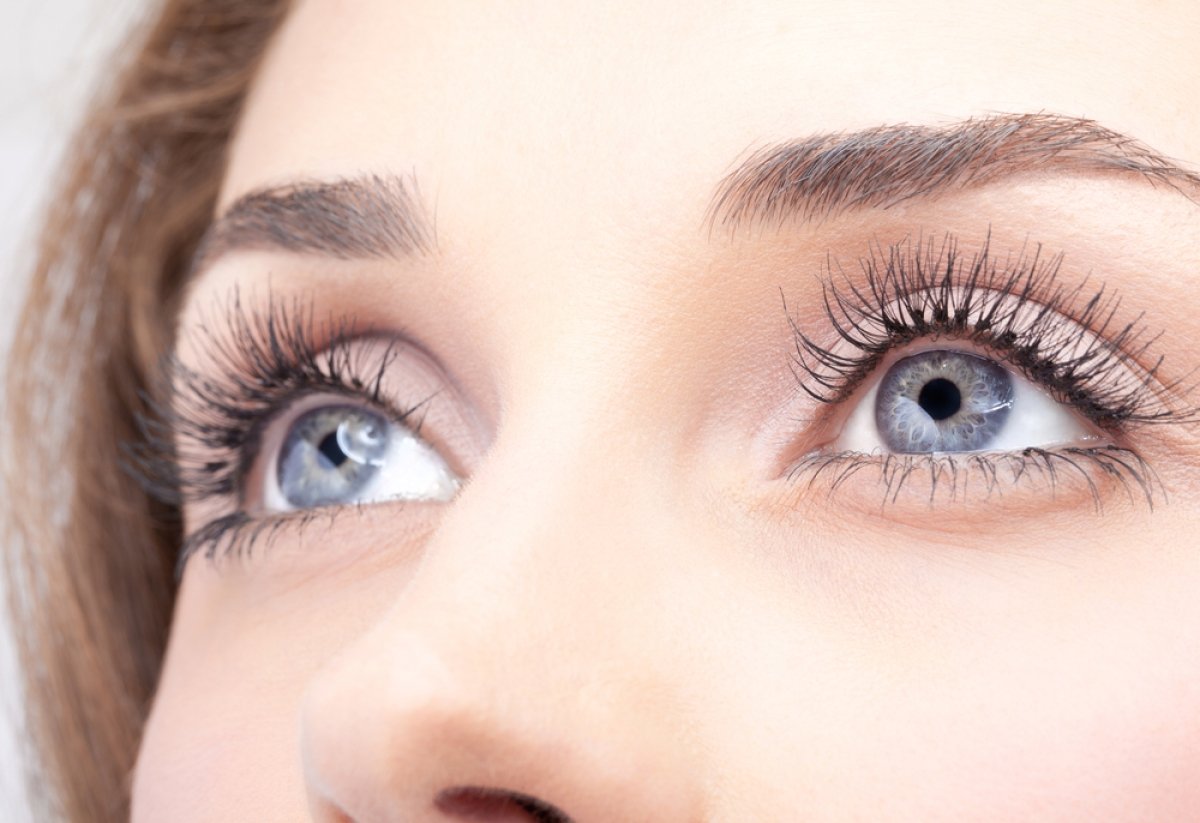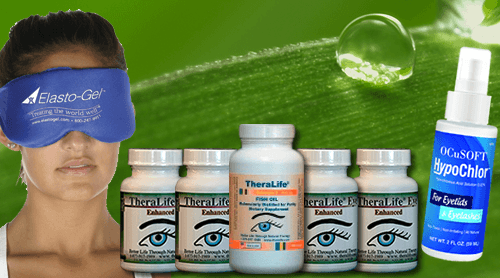Blepharitis symptoms often include red, swollen eyelids and crustiness after waking. Additionally, you may experience itchy, irritated eyes that can feel gritty or burn, and either watery or dry eye conditions. Vision might blur due to tear film issues, and poor hygiene can lead to frequent infections. Light sensitivity and exposure to allergens or environmental irritants can worsen discomfort. Recognizing these signs early is crucial for effective management and symptom relief.
TheraLife offers a range of natural, non-invasive products designed to alleviate blepharitis and related symptoms, providing relief and comfort for sufferers. Their products are formulated to restore the eye's natural balance, reducing inflammation and improving tear production. The comprehensive solutions offered by TheraLife not only address blepharitis symptoms but also support overall eye health, making them an excellent choice for those seeking long-term relief and management of this condition. For more information on how TheraLife's products can benefit you, visit their website.
Key Takeaways
- Red and swollen eyelids are common symptoms of blepharitis due to inflammation.
- Crusty eyelids upon waking can indicate blepharitis from accumulated debris.
- Itchy and irritated eyes often signal blepharitis, exacerbated by allergies or irritants.
- Burning sensation in the eyes suggests inflammation of eyelid margins in blepharitis.
- Blurred vision and gritty sensation occur from tear film instability in blepharitis.
Red and Swollen Eyelids
Blepharitis often manifests with red and swollen eyelids, a symptom that can be both uncomfortable and indicative of underlying inflammation.
Effective eyelid hygiene is vital in managing these symptoms. Regularly cleaning the eyelid margins with warm compresses can help remove debris and reduce swelling. This practice aids in maintaining the integrity of the meibomian glands, which are often implicated in blepharitis.
For treatment options, consider topical antibiotics or anti-inflammatory agents, which have been shown in clinical studies to alleviate inflammation.
It's important to adhere to a tailored treatment regimen, as recommended by an ophthalmologist, to prevent recurrence.
In addition, tear film health is critical in maintaining ocular surface integrity and function, as it plays a significant role in the management of symptoms associated with blepharitis and dry eyes.
Itchy and Irritated Eyes
Itchy and irritated eyes are common manifestations that can signal the presence of blepharitis. These symptoms often result from inflammation at the eyelid margins, which can be exacerbated by several factors.
Allergic reactions and environmental irritants play significant roles in aggravating this condition. Here's what you should consider:
- Allergic Reactions: Exposure to allergens like pollen or dust can trigger an immune response, leading to itchiness and irritation.
- Environmental Irritants: Pollutants and smoke can exacerbate blepharitis symptoms by causing further inflammation and discomfort.
- Chronic Inflammation: Persistent irritation may result from underlying skin conditions, such as seborrheic dermatitis or rosacea, which often accompany blepharitis.
Addressing these underlying causes can help manage recurring blepharitis more effectively, providing relief and preventing flare-ups.
Recognizing these factors early can help you manage blepharitis more effectively, reducing discomfort and improving eye health.
Sensitivity to Light
When experiencing blepharitis, you might notice an increased sensitivity to light, known as photophobia, due to inflammation affecting the eyelid margin and ocular surface. This condition can exacerbate light sensitivity by disrupting the tear film and exposing nerve endings. Managing photophobia involves addressing the underlying blepharitis through proper eyelid hygiene and potentially using lubricating eye drops to stabilize the tear film. For effective management, using specialized eyelid cleansers can help reduce microbial load and ocular surface inflammation.
Causes of Light Sensitivity
While several factors can lead to light sensitivity, understanding its underlying causes is vital for effective management. Blepharitis, an inflammatory eye condition, is often a significant contributor. Recognizing light sensitivity triggers can help in pinpointing the source.
Here are some common causes:
- Inflammation: Blepharitis exacerbates inflammation of the eyelids, increasing sensitivity to light due to heightened nerve responses.
- Dry eye syndrome: Reduced tear production leads to dryness, making your eyes more reactive to light.
- Ocular surface irregularities: Irregularities in the corneal surface can disrupt light refraction, causing discomfort.
Addressing these factors is essential before considering light sensitivity treatments. An analytical approach, considering each cause, aids in selecting effective interventions. Maintaining good eyelid hygiene can help manage blepharitis symptoms and reduce light sensitivity.
Managing Light Sensitivity
Addressing light sensitivity effectively requires a targeted approach that considers the root causes of your symptoms.
Start by identifying light sensitivity triggers such as bright sunlight or harsh indoor lighting. These can exacerbate your discomfort if not managed properly.
Protective eyewear, like polarized sunglasses or photochromic lenses, can mitigate these triggers by filtering out harmful rays and reducing glare.
Incorporating artificial tears or lubricating eye drops can also alleviate dryness, a common underlying factor in light sensitivity.
Regular cleaning of eyelids and lashes can further reduce inflammation and irritation associated with blepharitis.
Omega-3 fatty acids offer anti-inflammatory benefits, which can help in reducing the inflammation associated with blepharitis and subsequently alleviate light sensitivity.
Consistent application of these strategies helps manage sensitivity effectively.
Consult an eye care professional for personalized recommendations, especially if symptoms persist despite self-management efforts.
Watery or Dry Eyes
When experiencing blepharitis, you may notice either excessive tear production or insufficient tear film, both of which can lead to watery or dry eyes. The dysfunction of the meibomian glands, often linked to this condition, is a primary cause of eye dryness, and it can greatly impact your visual acuity. To manage tear production effectively, consider interventions like warm compresses or eyelid scrubs, which clinical studies suggest may help stabilize tear film and alleviate symptoms. Theralife products are recommended by healthcare professionals for their effectiveness in managing blepharitis and improving meibomian gland function.
Causes of Eye Dryness
Understanding the causes of eye dryness, whether manifesting as watery or dry eyes, is essential for effective management and treatment. Both environmental factors and lifestyle choices contribute considerably to this condition. Consider the following:
- Environmental Factors: Exposure to dry climates, wind, and smoke can disrupt tear film homeostasis, leading to dry eye symptoms. Minimizing these exposures can help maintain ocular surface integrity.
- Lifestyle Choices: Prolonged screen time without adequate breaks, insufficient hydration, and poor blinking habits can exacerbate dryness by reducing tear production or increasing evaporation.
- Systemic Conditions: Certain medical conditions like Sjögren's syndrome or diabetes can affect lacrimal gland function, altering tear composition or volume.
In addition, aging and hormonal changes such as menopause can significantly increase the risk of dry eye by affecting tear production and composition. Recognizing these causes can guide you in implementing preventive strategies, thereby enhancing ocular comfort and health.
Impact on Vision
Recognizing the multifaceted causes of eye dryness sets the stage for examining how these symptoms impact vision.
Blepharitis, characterized by inflammation of the eyelids, often leads to either excessive tearing or insufficient tear production. These conditions can cause significant vision impairment. Watery eyes may result in blurred vision because the tears disrupt the optical surface's regularity. Conversely, dry eyes can cause discomfort and visual disturbances due to inadequate tear film stability. Chronic inflammation from dry eye syndrome may lead to complications like chalazia.
Understanding these dynamics highlights the importance of addressing vision impairment early. Evidence suggests that timely intervention can mitigate these effects.
Treatment options, such as artificial tears or eyelid hygiene practices, aim to restore tear film balance and improve visual clarity. Identifying and managing these symptoms are essential to maintaining ideal vision health.
Managing Tear Production
Effectively managing tear production, whether dealing with watery or dry eyes, requires a thorough understanding of the underlying pathophysiological mechanisms.
Your tear film plays an essential role in maintaining moisture balance and protecting ocular surfaces. Disruptions in tear film composition can lead to either excessive tearing or insufficient lubrication.
To maintain ideal tear production:
- Assess Meibomian Gland Function: These glands contribute to the lipid layer of the tear film, preventing rapid evaporation. Meibomian Gland Dysfunction can lead to insufficient oil secretion, causing the tear film to evaporate more quickly and resulting in dry eye symptoms.
- Monitor Environmental Factors: Humidity and air quality can greatly influence tear evaporation rates and moisture balance.
- Evaluate Systemic Health Conditions: Autoimmune diseases and medication side effects may alter tear production, necessitating tailored interventions.
Crusty Eyelids Upon Waking
Crusty eyelids upon waking, often a key symptom of blepharitis, result from the accumulation of dried oil, skin cells, and bacteria at the eyelid margins. This accumulation can greatly impact your eyelid hygiene, leading to irritation and potential infection if not managed properly. Evidence suggests that maintaining meticulous eyelid hygiene can mitigate these symptoms and improve overall eyelid health. Crust formation can cause sleep disturbances, as the discomfort may prompt you to wake up frequently, disrupting your sleep cycle. Over time, this can affect your daily functioning and general well-being. Analytical approaches recommend daily cleaning routines, such as using warm compresses and eyelid scrubs, to remove debris and maintain eyelid cleanliness. This proactive strategy is essential for minimizing blepharitis-related complications. It is important to note that contaminated eye makeup can exacerbate blepharitis symptoms and lead to further complications if used during an active flare-up.
Burning Sensation in the Eyes
When dealing with blepharitis, a burning sensation in the eyes often signals inflammation of the eyelid margins, primarily due to bacterial overgrowth or gland dysfunction.
This discomfort can disrupt your daily activities, demanding prompt attention to achieve burning relief and restore eye comfort.
To manage this symptom effectively, consider the following strategies:
- Warm Compresses: Applying a warm compress enhances meibomian gland function, potentially reducing inflammation and promoting comfort.
- Lid Hygiene: Regular cleaning of the eyelid margins can decrease bacterial presence, mitigating irritation and enhancing eye comfort.
- Artificial Tears: These can offer immediate burning relief by lubricating the ocular surface, counteracting dryness often associated with blepharitis.
Blurred Vision
Blurred vision is a common symptom associated with blepharitis and can greatly affect daily life. This visual disturbance occurs due to inflammation at the eyelid margins, disrupting tear film stability. Blurred vision causes in blepharitis may include debris accumulation and meibomian gland dysfunction. It's essential to address these underlying issues promptly to reduce visual impairment.
To better understand the relationship between blepharitis and blurred vision, consider the following:
| Cause | Effect | Treatment |
|---|---|---|
| Tear film instability | Blurred vision | Artificial tears |
| Debris at eyelid margins | Tear film disruption | Eyelid hygiene |
| Meibomian gland blockage | Inadequate tear lipid layer | Warm compresses |
| Inflammation | Visual distortion | Anti-inflammatory medication |
| Chronic irritation | Prolonged blurred vision | Professional medical evaluation |
Implementing these blurred vision treatments can help restore clarity and improve quality of life.
Gritty or Foreign Body Sensation
A gritty or foreign body sensation often characterizes blepharitis, causing significant discomfort and irritation. This sensation is typically due to inflammation of the eyelid margin, which disrupts the normal tear film. When you experience this, it might feel like there's sand or a small object in your eye.
To understand this better, consider these points:
- Tear Film Instability: Inflammation causes tear film issues, resulting in the gritty sensation.
- Eyelid Margin Inflammation: Swelling and redness can enhance the foreign body feeling.
- Debris Accumulation: Flakes or crusts along the eyelashes can mimic a foreign object.
Recognizing these signs early is essential for timely intervention. Consulting an eye care professional can help in managing and alleviating symptoms effectively.
Frequent Eye Infections
Individuals with blepharitis often experience frequent eye infections due to compromised eyelid hygiene and disrupted tear film. This condition fosters an environment conducive to bacterial proliferation, exacerbating ocular surface vulnerability. Inadequate eyelid hygiene frequently leads to chronic inflammation, impairing the natural defense mechanisms of the eye. Consequently, the incidence of recurrent infections such as conjunctivitis or styes increases.
Analyzing the underlying conditions reveals that blepharitis disrupts the tear film's stability, impairing its protective function. This disruption allows pathogenic microorganisms to infiltrate, causing frequent infections.
Additionally, underlying conditions like seborrheic dermatitis or rosacea may exacerbate blepharitis, further increasing infection risk. Ensuring meticulous eyelid hygiene and addressing these underlying conditions can mitigate the frequency and severity of infections, enhancing ocular health and comfort.
Frequently Asked Questions
Can Blepharitis Cause Long-Term Damage to the Eyes?
Yes, blepharitis can lead to long-term effects if left untreated. Chronic inflammation might cause vision impairment due to scarring or corneal damage.
It's essential to manage symptoms promptly to minimize risks. Studies indicate that persistent blepharitis can alter tear film stability, impacting visual clarity.
Guarantee regular cleaning and follow prescribed treatments to prevent complications. If symptoms persist, consult an ophthalmologist for a thorough evaluation and tailored management plan.
What Are the Main Causes of Blepharitis?
You're exploring the main causes of blepharitis, which often involve bacterial infection and specific skin conditions.
Bacterial infection, particularly from Staphylococcus species, can lead to inflammation of the eyelid margins.
Skin conditions like seborrheic dermatitis or rosacea also play significant roles. These conditions disrupt the normal function of the oil glands in your eyelids, leading to irritation and inflammation.
Understanding these causes helps in managing and potentially preventing blepharitis effectively.
How Is Blepharitis Diagnosed by an Eye Specialist?
When an eye specialist diagnoses blepharitis, they'll use diagnostic techniques like an extensive eye examination.
They'll examine your eyelids closely with a slit lamp, which magnifies the area, allowing them to assess inflammation, scaling, and gland function.
The specialist may gently press on your eyelids to evaluate oil secretion from the meibomian glands.
They might also take eyelid margin swabs for analysis, ensuring an evidence-based approach to confirm the condition.
Are There Any Lifestyle Changes to Help Manage Blepharitis?
To manage blepharitis, you should focus on hygiene practices and dietary adjustments.
Clean your eyelids regularly with a gentle cleanser to reduce bacteria.
Consider adding omega-3 fatty acids to your diet, as studies suggest they may reduce inflammation.
Avoid eye makeup that irritates the eyelids.
Keep your environment clean to minimize allergens.
These evidence-based strategies can help alleviate symptoms and prevent flare-ups, promoting better eyelid health.
Can Blepharitis Be Linked to Other Eye Conditions?
When it rains, it pours. Blepharitis doesn't act alone; it often has a connection with other related eye conditions.
Studies reveal that it can accompany dry eye syndrome, meibomian gland dysfunction, and even conjunctivitis. This link suggests a shared pathophysiology, like inflammation or altered tear film dynamics.
Identifying blepharitis along with these conditions is essential for effective management. So, keep an eye out for symptoms, as early detection is key.
Conclusion
Recognizing blepharitis early can make a significant difference in managing this condition. Common symptoms include waking up with crusty eyelids and experiencing a gritty sensation in the eyes throughout the day. These signs may seem minor but can indicate a chronic issue that requires attention. Early intervention, particularly with TheraLife's products, can prevent complications such as frequent infections or blurred vision. TheraLife offers a range of natural solutions that promote proper eyelid hygiene and eye health. By addressing symptoms promptly with these products, you can ensure better eye health and enhance your overall quality of life. Don't wait for symptoms to escalate; take proactive steps with TheraLife to maintain optimal eye comfort and wellness.



